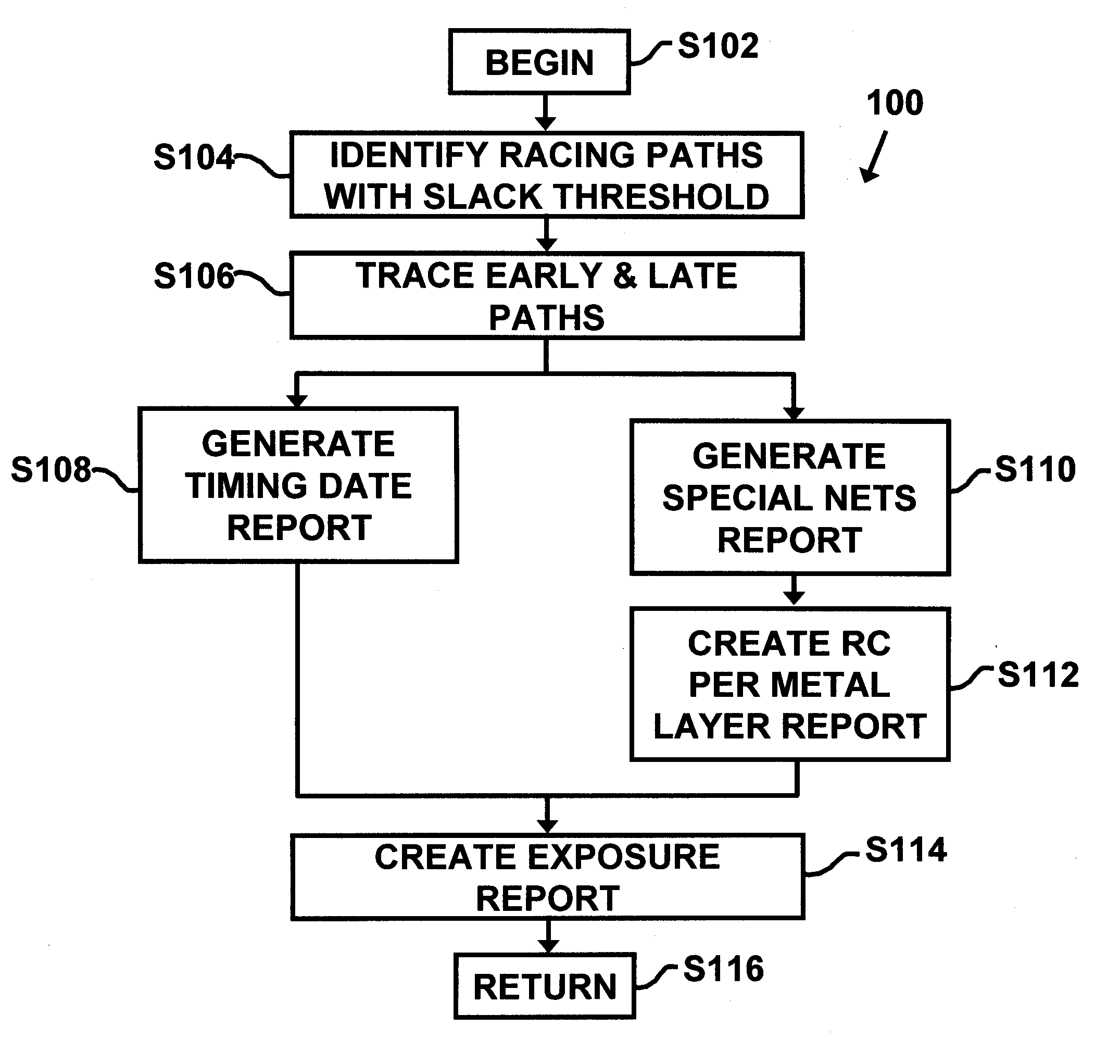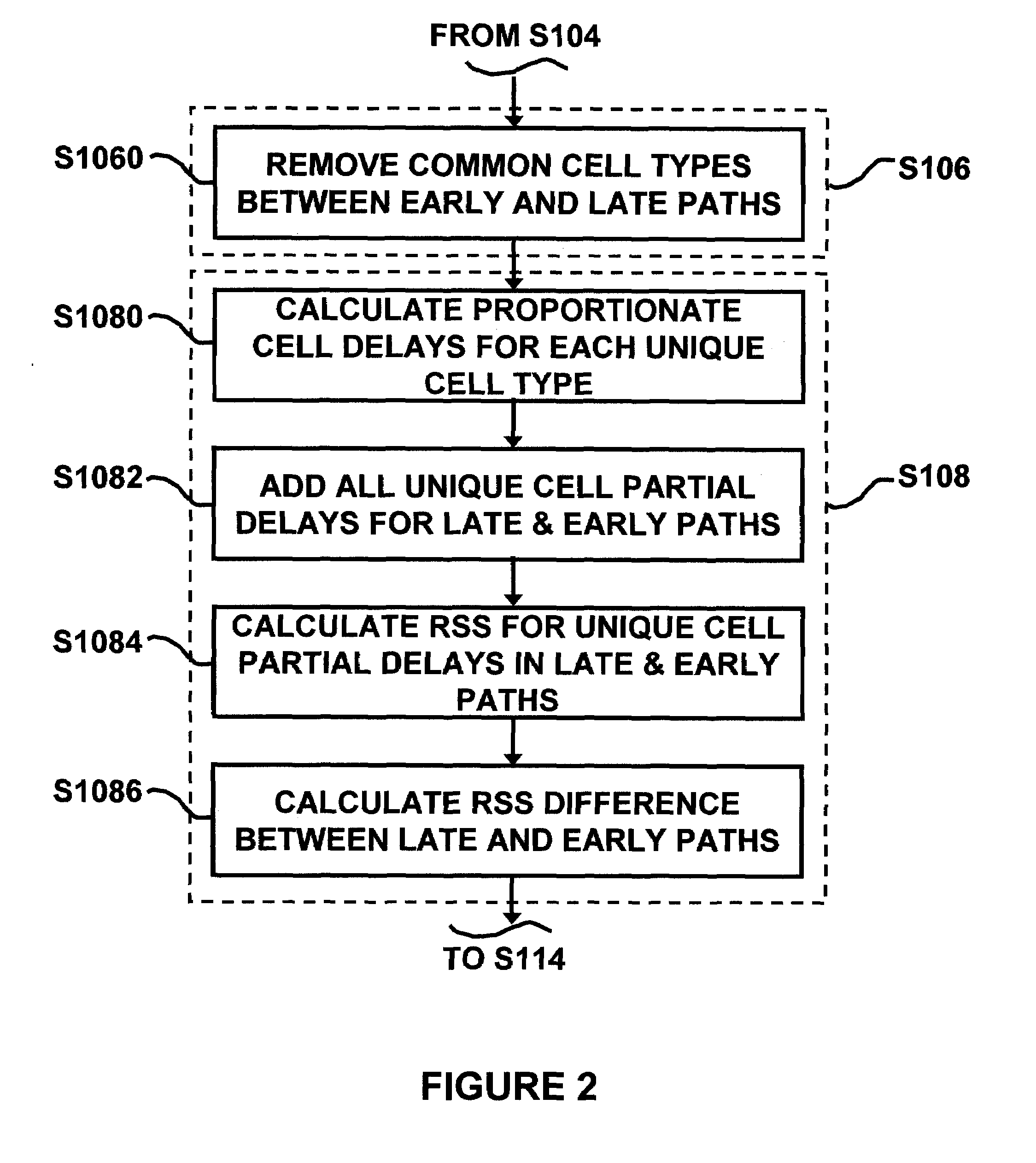Method and system for evaluating timing in an integrated circuit
a timing and integrated circuit technology, applied in the direction of noise figure or signal-to-noise ratio measurement, instruments, program control, etc., can solve the problems of time-consuming and impractical analysis, unrealistic consideration of all parameters at their slowest,
- Summary
- Abstract
- Description
- Claims
- Application Information
AI Technical Summary
Problems solved by technology
Method used
Image
Examples
Embodiment Construction
[0021]Embodiments of the invention provide methods for evaluating the delay in racing paths of an integrated circuit by using STA techniques (i.e., cell-based delay) and by evaluating the delays due to effects caused by multiple metallization layers in the integrated circuit (i.e., wire-dependent delay). The results may provide a circuit designer with a more realistic estimate of the off-tracking or slack to be expected, as well as a better understanding of how process variations affect off-tracking or slack. Methods according to the invention may be used to diagnose timing problems in existing circuits and to locate timing errors, or to design new integrated circuits. Methods according to the invention may be implemented as part of a system that includes a computer-readable medium having appropriate executable program instructions.
[0022]FIG. 1 is a block diagram illustrating the tasks of a method 100 according an embodiment of the invention. Method 100 may be performed in a number ...
PUM
 Login to View More
Login to View More Abstract
Description
Claims
Application Information
 Login to View More
Login to View More - R&D
- Intellectual Property
- Life Sciences
- Materials
- Tech Scout
- Unparalleled Data Quality
- Higher Quality Content
- 60% Fewer Hallucinations
Browse by: Latest US Patents, China's latest patents, Technical Efficacy Thesaurus, Application Domain, Technology Topic, Popular Technical Reports.
© 2025 PatSnap. All rights reserved.Legal|Privacy policy|Modern Slavery Act Transparency Statement|Sitemap|About US| Contact US: help@patsnap.com



